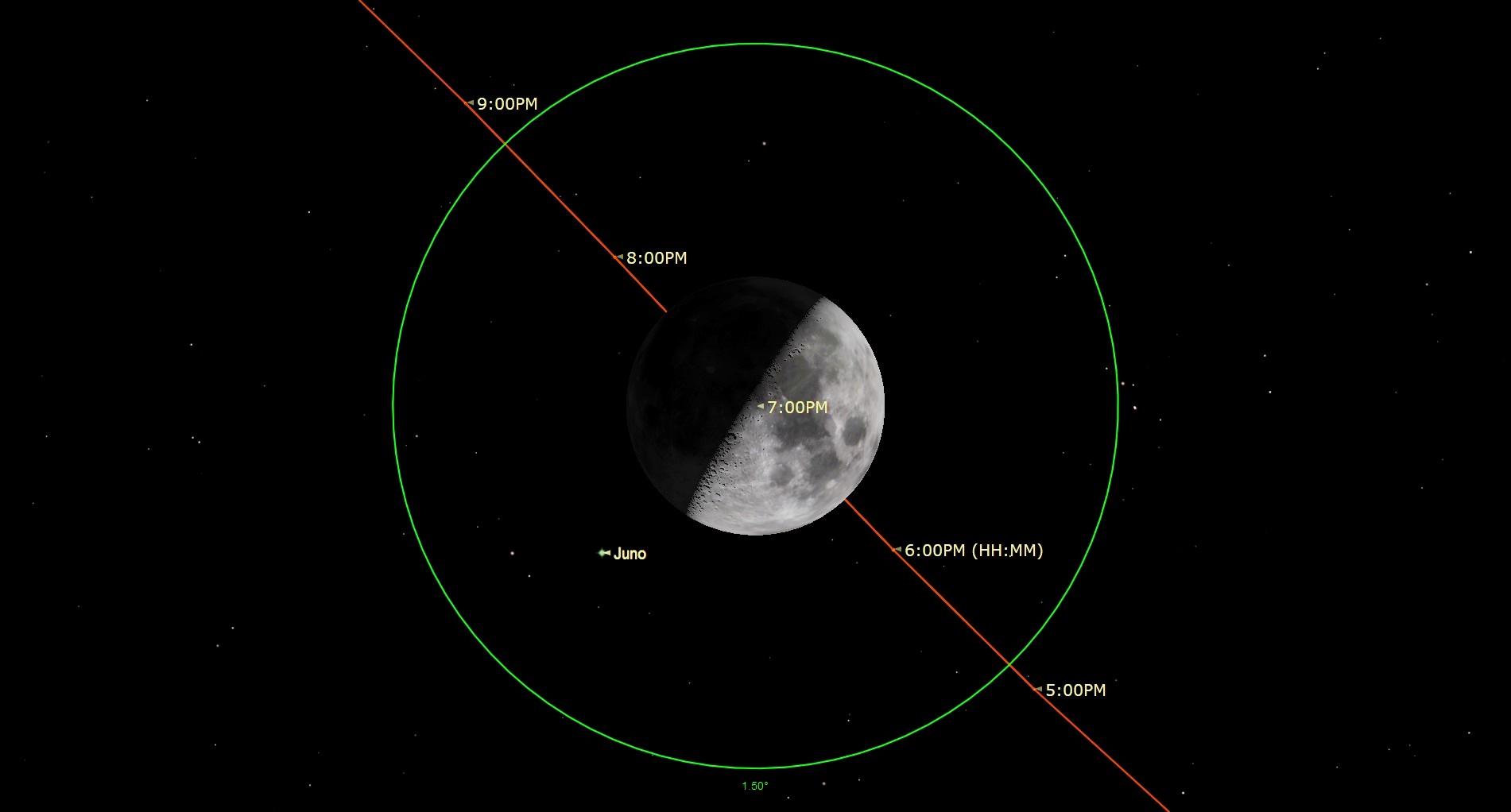See the half-lit first quarter moon on Wednesday (Nov. 30)
Half of the moon's face will be illuminated on the last day of November during the first quarter moon.

On the evening of Wednesday (Nov. 30), the moon enters its first quarter phase with its face almost exactly half-illuminated. During this lunar phase, the moon rises at midday and sets around midnight.
From New York City, the first quarter moon will become visible at 4:47 p.m. EST (2147 GMT) appearing at 33 degrees above the horizon to the southeast according to In the Sky. (Remember - your fist at arm's length equals roughly ten degrees in the sky.)
The first quarter moon will reach its highest point in the sky, 36 degrees above the southern horizon, at around 6:02 p.m. EST (2302 GMT). Following this, the first quarter moon will be observable until 10:32 p.m. EST (0332 GMT) at which point it will drop below 7 degrees over the southwest horizon.
Related: Night sky, November 2022: What you can see tonight [maps]
The first quarter moon falls exactly between the new moon and the full moon in the moon's 29.5-day cycle, or lunar month. This phase of the moon gets its name because the moon has completed the first quarter of its lunar cycle.
During the new moon, the face of the moon is completely dark, almost invisible in the night sky. In contrast to this, during the full moon, the lunar face that points towards Earth is completely illuminated.
In the lead-up to the first quarter moon, the illumination of the moon advances across the lunar face and is described as waxing. This will continue until the next full moon, the Cold Moon, which is the last full moon of 2022 and falls on December 7.
Breaking space news, the latest updates on rocket launches, skywatching events and more!
Another change that the moon will undergo as it progresses through the first quarter moon towards the full moon is setting later and later each night. As a consequence, it is visible for longer and longer each night, and by the time the Cold Moon arrives, it will be visible for the majority of the night only disappearing at around dawn.
This progression is reversed as the lunar phase moves from the full moon to the next new moon which signals the beginning of the next lunar cycle. The illuminated face of the moon recedes, and the moon is described as waning.
Also reversed is the change in the time at which the moon sets. This will get progressively earlier and earlier becoming visible for less and less of the night leading up to the new moon at which point it will set at midnight.

Want to get a closer look at the moon? We recommend the Celestron Astro Fi 102as the top pick in our best beginner's telescope guide. Don't forget a moon filter!
Exactly between the full moon and the new moon is a phase analogous to the first quarter called the third quarter or final quarter moon, which is the mirror opposite of the first quarter moon. During the final quarter, the moon rises at midnight and sets around midday. During this phase, the moon will be half-illuminated again, and which side of the moon skywatchers see illuminated during both these quarter phases depends on where on Earth they are located.
The next final quarter moon and the last of 2022 occurs on Dec. 16 and the next lunar cycle begins on Dec. 23, the day before Christmas Eve.
If you want to take the best photos of the moon that you can, our how to photograph the moon guide contains a wealth of useful information to raise your lunar photography to the next level. Our best cameras for astrophotography and best lenses for astrophotography can also help you capture the best moon images you can, no matter your skill level.
Editor's Note: If you snap the moon during its first quarter phase and would like to share it with Space.com's readers, send your photo(s), comments, and your name and location to spacephotos@space.com.

Robert Lea is a science journalist in the U.K. whose articles have been published in Physics World, New Scientist, Astronomy Magazine, All About Space, Newsweek and ZME Science. He also writes about science communication for Elsevier and the European Journal of Physics. Rob holds a bachelor of science degree in physics and astronomy from the U.K.’s Open University. Follow him on Twitter @sciencef1rst.


